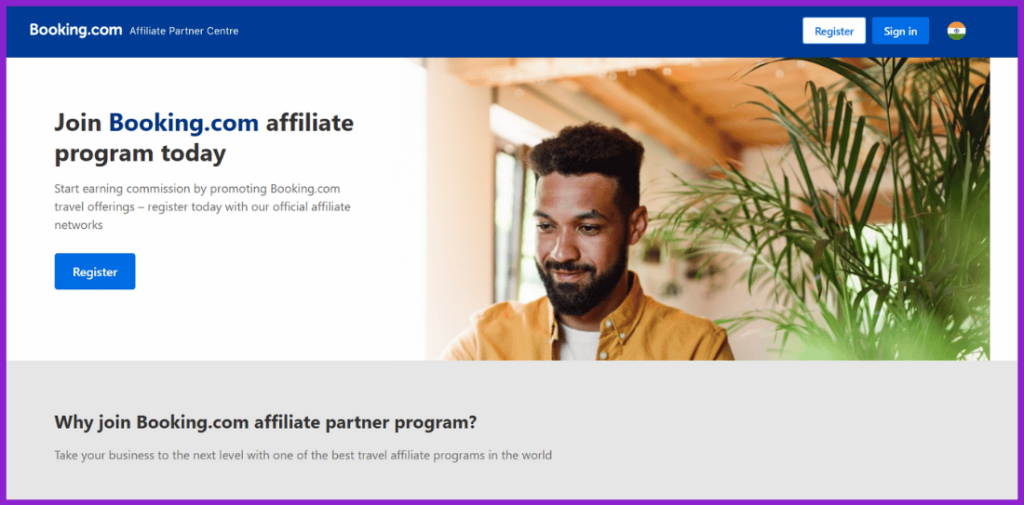
When Emily, a tech company’s marketing manager, sought to expand her company’s brand reach, she turned to a familiar strategy: collaboration.
Similarly, Jason, a boutique coffee shop owner, partnered with a local bakery to attract more customers. Both discovered the power of partnership marketing (or partner marketing) – aligning businesses to share resources, reach new audiences, and drive growth.
In today’s competitive landscape, marketing partnerships are essential for staying relevant, building trust, and achieving sustainable success.
This blog explores how strategic collaboration can fuel your business growth, regardless of size or industry.
Key Benefits of Using Partnership Marketing
Partnership marketing offers several key benefits that can significantly enhance business growth. Here are some of the top advantages, each supported by recent statistics:
1. Expanded Reach and Access to New Audiences
Collaborating with other organizations allows your business to tap into new markets and customer bases.
According to Hinge report, high-growth brands are three times more likely to use marketing partnerships as part of their overall strategy than no-growth firms.

2. Increased Revenue Streams
Partnerships can lead to significant revenue growth.
Notably, partners contribute to 58% of the revenue of top-performing companies, according to Crossbeam’s observation.
3. Enhanced Brand Credibility and Trust
Aligning with reputable partners can boost your brand’s credibility.
When a partner vouches for a brand, their followers are more likely to have confidence in its offerings. (Source: Impact)
4. Cost-Effective Marketing Efforts
Sharing marketing resources with partners can lead to more efficient and cost-effective campaigns.
Based on Foundry report, organizations are allocating more of their marketing budget towards partner marketing programs, reinforcing confidence in their potential.
5. Accelerated Deal Closures
Involving partners in the sales process can expedite deal closures.
Based on Crossbeam’s State of the Partner Ecosystem report, deals are 53% more likely to close when there’s a partner involved, and they close an impressive 46% faster.
6. Innovation and Competitive Advantage
Partnerships can drive innovation, providing a competitive edge.
According to Harvard Business Review, a significant 94% of executives in the tech industry see innovation partnerships as a necessary strategy.

7. Diversified Revenue Streams
Partner marketing enables businesses to diversify their revenue streams by tapping into new markets, product categories, or distribution channels.
8. Improved Customer Acquisition and Retention
Partnerships can enhance customer acquisition and retention strategies.
Foundry’s latest report says that by leveraging co-branding and joint marketing programs, companies can navigate complex marketing landscapes with increased confidence and investment.
How to Identify the Right Partner for Your Business
Selecting the right partner is pivotal for the success of your partnership marketing strategy.
A well-chosen partnership can drive growth, while an ill-suited one can lead to missed opportunities or even harm your brand reputation. Here’s how to ensure you find the perfect match:
1. Ensure No Conflict of Interest
The first rule of partnership marketing is to ensure there’s no direct competition or conflict of interest between you and your potential business partner.
Partnering with a business that offers similar products or services can dilute your brand’s unique value and confuse customers. Instead, look for complementary businesses that enhance, rather than compete with, your offerings.

For example, a homestay business partnering with a local tour guide company can create a seamless travel experience for guests by combining accommodation with curated activities and sightseeing tours.
This collaboration enhances the customer experience without overlapping services.
2. Align Goals and Values
Shared goals and compatible company values form the foundation of a strong partnership. Discussing objectives upfront ensures you’re working towards a common purpose.
For example, an accounting firm partnering with a business consulting agency can jointly target small and medium-sized enterprises (SMEs), offering end-to-end solutions for financial planning and business growth strategies.
Both partners aim to empower SMEs with tools to succeed, aligning their goals and values seamlessly.
3. Assess Audience Compatibility
The best partnerships occur when both brands share a similar target audience but cater to different aspects of their needs. This ensures mutual relevance without overlap.
For example, a cloud kitchen partnering with a meal subscription service can combine forces to target busy professionals or health-conscious consumers.
The cloud kitchen provides diverse and freshly prepared meals, while the subscription service offers a convenient delivery framework, appealing to the same audience with complementary solutions.
4. Evaluate Brand Reputation and Trustworthiness
Your partner’s reputation will reflect on your brand. Partner with businesses known for their integrity, quality, and strong customer relationships.
Here’s a pro tip.
Check reviews, social proof, and industry standing before finalizing the partnership.
5. Complementary Strengths and Resources
A good partnership brings added value through complementary strengths. Assess what your partner brings to the table, whether it’s expertise, technology, or distribution channels.
For example, a boutique law firm partnering with a financial advisory firm can provide a holistic service to high net-worth clients.
While the law firm offers expertise in estate planning and legal compliance, the financial advisory firm focuses on investment strategies and wealth management, creating a seamless experience for clients.
6. Commitment to Clear Communication
Transparent communication is essential for effective collaboration. Agree on deliverables, timelines, and shared responsibilities from the outset.
For example, a boutique fitness studio partnering with a wellness brand maintains regular communication through shared calendars and weekly progress check-ins.
Both parties clearly outline their promotional responsibilities, ensuring campaigns run smoothly and deliver mutual benefits.
7. Start Small to Test Compatibility
Begin with a limited-scope project to evaluate the partnership’s effectiveness. If the trial is successful, scale the collaboration further.

For example, a local coffee shop and a bakery test their partnership by co-hosting a weekend pop-up event.
The bakery supplies fresh pastries, while the coffee shop offers beverages, allowing both to assess customer response and operational synergy before pursuing a larger collaboration.
Popular Types of Marketing Partnerships
Marketing partnerships come in various forms, each tailored to achieve specific business goals. From sharing audiences to leveraging complementary expertise, these partnerships enable businesses to amplify their reach and impact.
Here are the most popular types of marketing partnerships with real-time examples:
1. Co-Branding Partnerships
Co-branding involves two businesses collaborating to create a product or campaign that carries both brands’ identities. This type of partnership works best when the brands share complementary values and audiences.
For example, Nike and Apple partnered to create the Nike+iPod fitness tracker, combining Nike’s athletic expertise with Apple’s technology.
2. Affiliate Marketing Partnerships
Affiliate partnerships involve one business promoting another’s products or services in exchange for a commission on sales or leads generated. This arrangement benefits both parties by aligning financial incentives with performance.
For example, travel bloggers partnering with hotel booking platforms like Booking.com to promote accommodations and earn commissions.

3. Distribution Partnerships
Distribution partnerships occur when one company agrees to sell or promote another company’s product or service, often in exchange for a share of the revenue.
Here’s an example. Starbucks partnered with PepsiCo to distribute its ready-to-drink coffee beverages globally, leveraging PepsiCo’s extensive distribution network to expand reach.
4. Product Integration Partnerships
This type of partnership involves integrating one company’s product or service into another’s offering to enhance the customer experience.
For example, Spotify integrating with ride-sharing apps like Uber to allow users to play their favorite playlists during rides.
5. Content Partnerships
Content partnerships involve co-creating and sharing content to reach wider audiences and leverage each other’s credibility.
For example, GoPro and Red Bull collaborated to create adrenaline-fueled content, combining GoPro’s action cameras with Red Bull’s extreme sports events to engage their shared adventure-loving audience.
6. Event Sponsorships and Collaborations
Businesses collaborate on events to showcase their brand, reach new audiences, and create memorable experiences.
For example, Coca-Cola partnered with the FIFA World Cup as an official sponsor, leveraging the event’s global audience to enhance brand visibility and connect with millions of football fans worldwide.

7. Cause Marketing Partnerships
These partnerships involve businesses aligning with non-profits or social causes to drive awareness and support while enhancing their brand’s social responsibility image.
For example, TOMS partnered with charitable organizations to donate a pair of shoes for every pair sold, aligning their business model with a social cause to drive impact and customer loyalty.
8. Loyalty and Referral Partnerships
These partnerships reward customers for promoting a business or engaging with a partner’s offerings.
For example, Marriott Bonvoy partnered with American Express to offer a co-branded credit card, allowing customers to earn loyalty points on purchases that can be redeemed for hotel stays and other travel perks.
Step-by-Step Guide to Building a Successful Partnership Marketing Strategy
Creating a partnership marketing strategy requires a structured approach to ensure both parties achieve mutual success.
Here’s a step-by-step guide to help you craft an effective strategy:
1. Define Clear Objectives
Identify what you aim to achieve through the partnership – brand awareness, new customer acquisition, increased revenue, or enhanced credibility. Ensure these objectives align with your overall business goals.

For example, a pet supplies retailer partners with a local veterinary clinic to co-host a pet health workshop, aiming to increase foot traffic to their store and build trust with pet owners.
2. Research and Identify Potential Partners
Look for businesses that share similar values and have complementary products, services, or audiences. Use tools like social media, industry events, or partnership platforms to identify potential collaborators.
For example, a sustainable fashion brand researches eco-friendly laundry detergent companies to partner with, ensuring both target environmentally conscious consumers and align in values.
3. Assess Compatibility and Resources
Ensure your potential partner shares your commitment to success and has the necessary resources to contribute meaningfully to the partnership. Evaluate audience overlap, operational strengths, and cultural fit.
For example, a fitness studio partners with a nutrition brand, ensuring both target health-conscious individuals and can contribute unique expertise.
4. Develop a Mutual Value Proposition
Clearly define what each partner will bring to the table and how the collaboration will benefit both parties. Align the partnership goals with your partner’s business priorities.
For example, A homestay business partners with a local tour operator to offer exclusive travel packages, benefiting both through increased bookings.
5. Create a Detailed Partnership Agreement
Outline responsibilities, deliverables, timelines, and financial arrangements in a formal agreement. Include contingency plans for unexpected challenges.

For example, a fitness app and a wearable technology brand draft a partnership agreement outlining shared promotional responsibilities, revenue-sharing terms for bundled offerings, and a timeline for joint campaigns.
6. Pilot with a Small Campaign
Test the partnership with a small-scale initiative to gauge compatibility and measure early results. Use this phase to identify potential challenges and make adjustments before scaling up.
For example, a home services provider partners with a self-storage business to offer a limited-time bundled discount, where customers booking cleaning/plumbing/HVAC services receive a discount on nearby storage units.
7. Leverage Cross-Promotion
Utilize each other’s marketing channels to amplify the campaign’s reach. Include email newsletters, social media posts, blogs, and paid ads in your strategy.
For example, a cybersecurity firm and a cloud storage provider collaborate on a whitepaper about data security, promoting it through each other’s company websites, LinkedIn pages, email newsletters, and blogs to reach a broader audience.
8. Monitor and Optimize Performance
Track key performance indicators (KPIs) such as engagement, leads, sales, or brand mentions. Use analytics tools to assess campaign performance and make data-driven decisions for improvement.
For example, a digital marketing consulting agency and a graphic design studio collaborate on a case study campaign, tracking metrics like website traffic, lead inquiries, and social media engagement to measure the partnership’s impact and optimize their promotional strategies.
9. Maintain Strong Communication
Schedule regular check-ins to discuss progress, resolve issues, and align on next steps. Keep communication channels open and transparent.

For example, a SaaS company and a sales training organization schedule monthly check-ins to discuss the effectiveness of their co-branded webinars, address any operational challenges, and align on upcoming marketing efforts.
10. Celebrate Success and Scale Up
Celebrate milestones and recognize the partnership’s achievements. Scale up successful campaigns and explore additional areas of collaboration.
Partnership Marketing Challenges and How to Overcome Them
Partnership marketing, while beneficial, comes with its set of challenges. Here are common obstacles and ways to address them:
1. Conflict of Interest: Misaligned goals can cause friction. Ensure partners complement each other and revisit objectives regularly.
2. Unequal Contributions: Disparities in effort or resources can lead to resentment. Clearly outline roles and responsibilities in a formal agreement.
3. Communication Issues: Poor communication can create delays. Establish regular check-ins and use tools to streamline collaboration.
4. Audience Mismatch: A misaligned audience reduces effectiveness. Analyze target markets to ensure compatibility.
5. Lack of Clear Goals: Undefined KPIs hinder success tracking. Set measurable objectives and monitor progress with analytics.
6. Cultural Differences: Variances in work culture can lead to misunderstandings. Address expectations early and foster adaptability.
7. Resource Constraints: Limited resources may stall efforts. Start small with low-cost initiatives before scaling up.
8. Dispute Resolution: Disagreements can strain relationships. Include resolution protocols in agreements and communicate openly to resolve issues.
Final Thoughts
Partnership marketing is a powerful way to expand your reach, boost brand visibility, and drive business growth.
By testing the strategies outlined above, you can discover what works best for your business and refine your approach to maximize results.
Ready to learn more about effective marketing techniques? Explore our other insightful blogs for inspiration and actionable tips!
